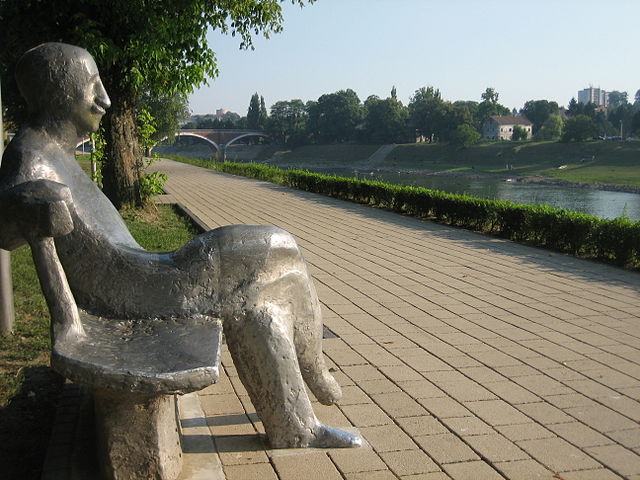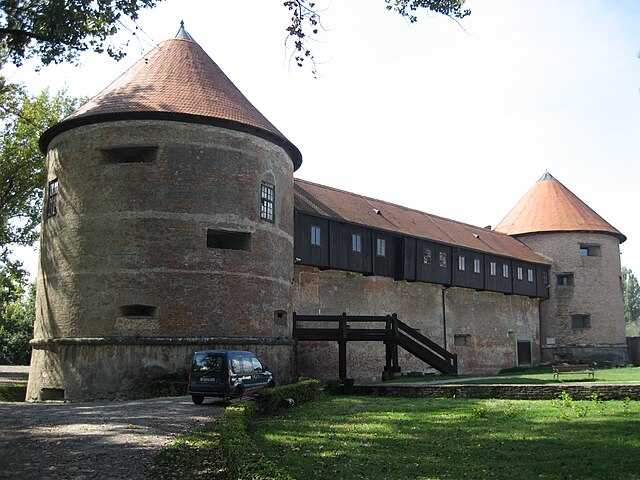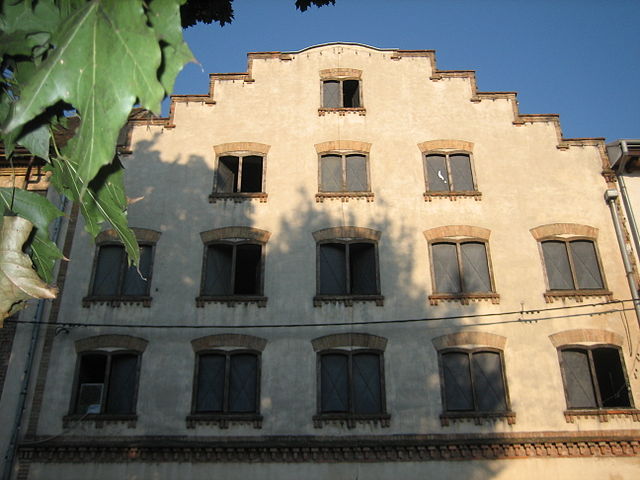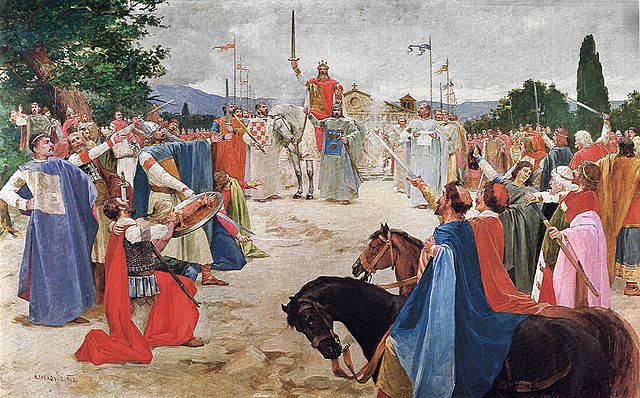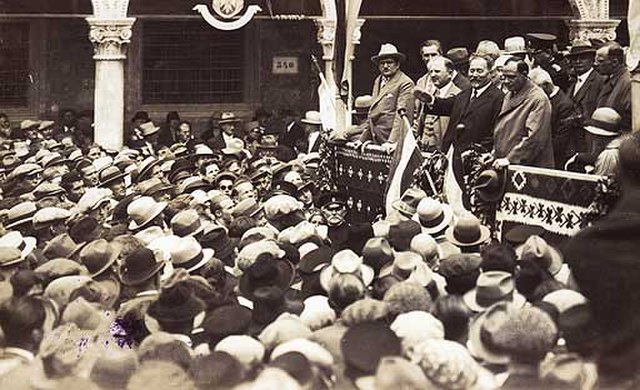Sisak is a city in central Croatia, spanning the confluence of the Kupa, Sava and Odra rivers, 57 km (35 mi) southeast of the Croatian capital Zagreb, and is usually considered to be where the Posavina begins, with an elevation of 99 m. The city's total population in 2021 was 40,185 of which 27,886 live in the urban settlement (naselje).
Image: Old bridge Sisak
Image: Sisak Matos monument
Image: Sisak fortress
Image: Sisak old storahouse
Croatia, officially the Republic of Croatia, is a country located at the crossroads of Central and Southeast Europe. Its coast lies entirely on the Adriatic Sea. Croatia borders Slovenia to the northwest, Hungary to the northeast, Serbia to the east, Bosnia and Herzegovina and Montenegro to the southeast, and shares a maritime border with Italy to the west. Its capital and largest city, Zagreb, forms one of the country's primary subdivisions, with twenty counties. Other major urban centers include Split, Rijeka and Osijek. The country spans 56,594 square kilometres, and has a population of nearly 3.9 million.
Coronation of King Tomislav by Oton Iveković
Ban Josip Jelačić at the opening of the first modern Croatian Parliament (Sabor), June 5, 1848. The Croatian tricolour flag can be seen in the background.
Mass protests in Zagreb against the unification of the State of Slovenes, Croats and Serbs with the Kingdom of Serbia in 1918.
Stjepan Radić, leader of the Croatian Peasant Party who advocated federal organisation of the Yugoslavia at the assembly in Dubrovnik, 1928. His death at the end of the same year as a result of an assassination in the National Assembly by NRS member, Serbian nationalist politician Puniša Račić, leads the country to a serious political crisis.


